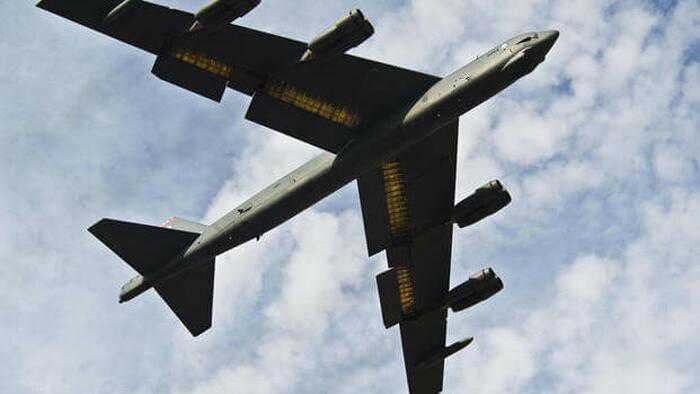On a recent Sunday, the US Central Command (CENTCOM) announced extensive airstrikes against ISIS camps in central Syria, underscoring a renewed focus on counterterrorism efforts aimed at disrupting the group’s operations. This military initiative involved over 75 targets and was supported by various U.S. Air Force assets, notably B-52 bombers, F-15 fighters, and A-10 attack planes. The decision to undertake such a large-scale operation raises questions about the timing and strategic calculus behind what appears to be a significant late-stage assault on ISIS. CENTCOM clarified that the strikes were intended to degrade ISIS’s capabilities to facilitate external attacks and prevent the group from taking advantage of the shifting political landscape in Syria. No civilian casualties have been reported at this time, reflecting a rare instance of precision in targeting such complex scenarios.
The question arises as to why this surge in military action against ISIS is occurring now, especially given the lack of similar operations for many years. Analysts speculate that the recent shifts in the Syrian conflict, particularly following the ousting of President Bashar al-Assad and the subsequent control of Damascus by jihadist factions, including Hayat Tahrir al-Sham (HTS), have influenced U.S. strategic decisions. During the Obama administration, there were accusations that the U.S. and its allies had inadvertently supported the rise of ISIS through the distribution of arms to various anti-Assad factions. This history complicates the narrative surrounding current U.S. military efforts, suggesting delayed engagement against a group that some argue was previously leveraged as a political tool against Assad’s regime.
President Joe Biden’s address on the same day added a layer of context to the military operations and ongoing reshaping of Syria’s political landscape. He proclaimed the “fall” of the Assad regime, labeling it a historic moment that could lead towards a free future for Syrians. However, Biden also acknowledged the inherent “risks and uncertainties” that accompany this transition, emphasizing that the U.S. would support neighboring nations should threats emerge following these political upheavals. His statement reflects a careful balance between expressing optimism for Syria’s future while recognizing the potential for new threats arising from groups that previously opposed Assad, some of which have questionable human rights records.
In addition to Biden’s comments, a national security statement from the White House clarified that the U.S. involvement in recent hostilities is limited and that the ongoing offensive against Assad’s forces is primarily led by HTS, which the U.S. has designated as a terrorist organization. This indicates a strategic distancing from the very factions that are now central to the power struggle unfolding in Syria, signifying a complex web of alliances and enmities in a conflict that has drawn in multiple international actors over the years. Furthermore, Biden highlighted the need for vigilance in evaluating the actions of the groups now taking responsibility for governance and security in the absence of Assad.
In parallel, Turkish President Recep Tayyip Erdoğan commented on the shifting political dynamics by juxtaposing his tenure with that of Vladimir Putin, suggesting a sense of resilience amidst a turbulent global political landscape. His remarks reflect the interconnectedness of various international players as they navigate their interests in Syria, further entrenching the narrative that global leadership is in flux following significant geopolitical events. Erdoğan’s claim of being one of the last two standing leaders of influence points to a potential reconfiguration of alliances and the broader implications for regional stability.
As reports emerge of looting and other disorderly conduct within the Syrian capital post-Assad, the uncertainty about the future of Syria is palpable. The concept of a “fog of war” aptly captures the current situation, where predictions about Syria’s immediate future remain elusive due to shifting power dynamics and the multitude of active factions. The aftermath of Assad’s regime and the rise of new governing bodies could lead to competing factions vying for control, and the overall stability of the region is at best uncertain. Observers are left to ponder whether the U.S. military’s renewed focus on ISIS will translate into broader strategic stability or merely provide a backdrop for further conflict amid a complex and evolving situation on the ground.

